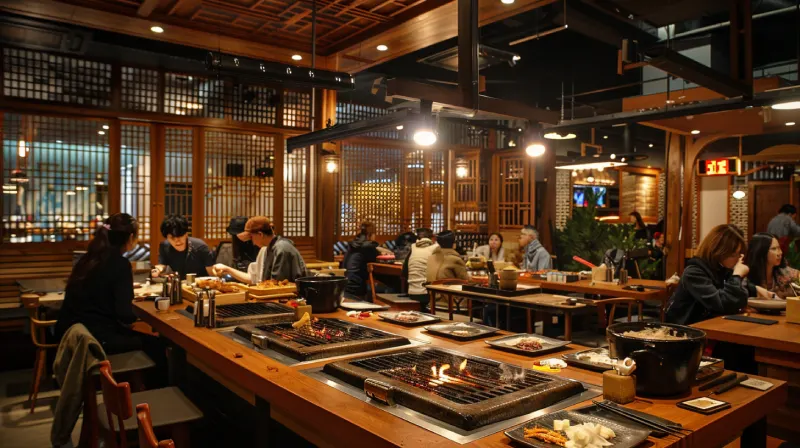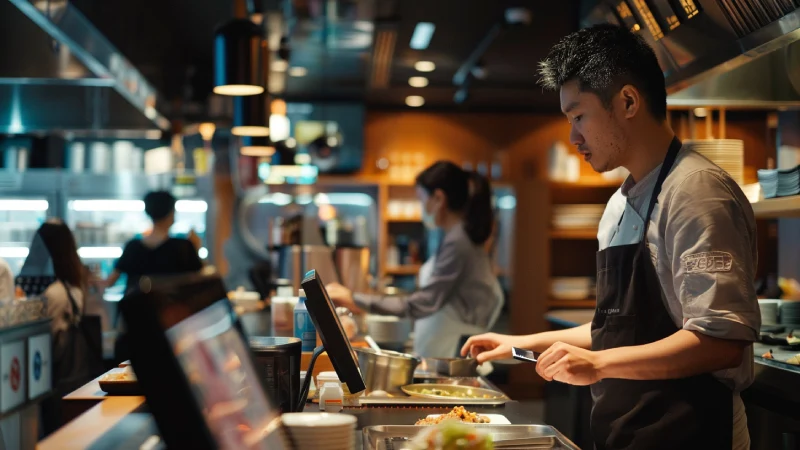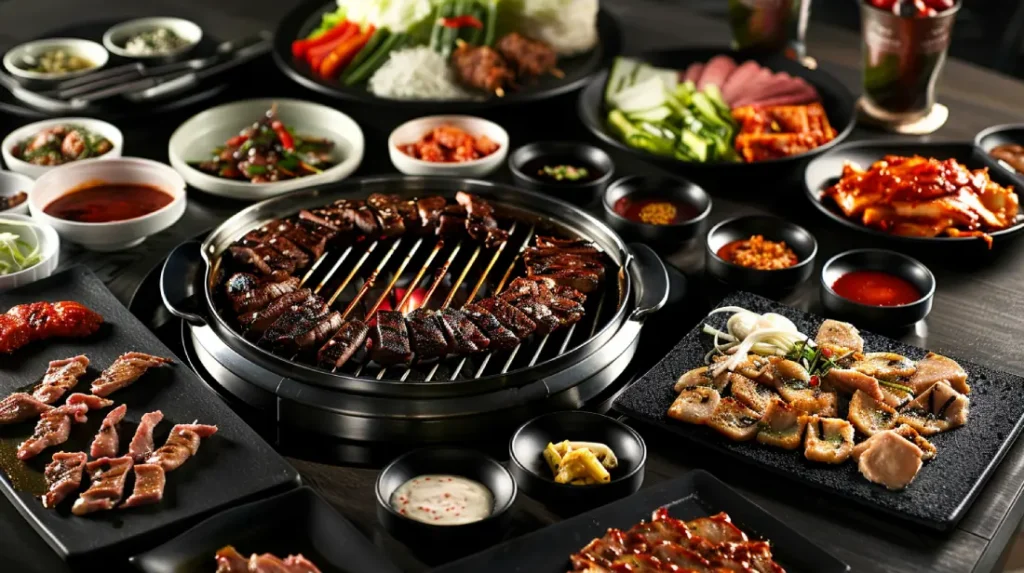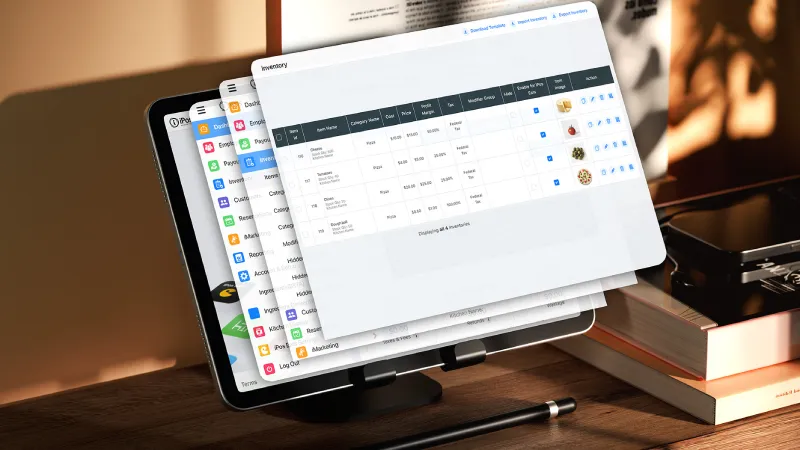Korean grills have emerged as a popular dining choice in the United States, captivating food enthusiasts with their unique culinary experience. These establishments not only offer delicious food but also provide an interactive dining format that engages customers. As the trend continues to grow, many entrepreneurs are considering entering this vibrant market.
In this article, we will delve into the key aspects of the Korean steakhouse business. We will review essential market data and provide a step-by-step guide for aspiring restaurateurs. In addition, we will highlight the most popular dishes and the importance of technology in Korean steakhouse operations. Finally, we will discuss how iPos can streamline operations, improving customer satisfaction and increasing profitability.
Distinctive Features
The ambiance in Korean grill restaurants is distinct and inviting. The design often incorporates traditional Korean elements, such as wooden accents and vibrant colors, creating a warm atmosphere. Tables equipped with built-in grills are a hallmark of these establishments, allowing customers to cook their food right at their seats.
This interactive dining method not only engages guests but also encourages socialization. Another significant feature is the diverse menu offerings. Korean grills typically serve a variety of marinated meats, fresh vegetables, and an array of side dishes known as banchan.
These side dishes complement the main meal, adding depth to the dining experience. The combination of flavors and textures makes each meal memorable, setting Korean grills apart from other dining options.
Hungry for Perfection: Why Are Korean Grill Restaurants a Top Choice?
The service style in Korean grill restaurants often emphasizes hospitality. Staff members are trained to assist customers with grilling techniques, ensuring that the food is cooked to perfection. This attentive service contributes to a positive dining experience, encouraging repeat visits.
Overall, the unique blend of ambiance, diverse menu, and exceptional service creates a compelling reason for diners to choose Korean grills. The interactive nature of the dining experience make these restaurants a top choice for those seeking both delicious food and memorable moments.
Business data on Korean BBQ in the United States

The market for Korean BBQ grills in the United States has seen substantial growth over the past decade. According to industry reports, the segment has expanded by over 20% annually, driven by increasing consumer interest in authentic Asian cuisines. This trend is particularly strong among younger demographics, who seek unique dining experiences.
Moreover, the average revenue for a Korean grill restaurant can range from $500,000 to $2 million per year, depending on location and size. Gen Korean BBQ finished 2023 with $181 million in sales, a 10.6% increase. Urban areas with a diverse population tend to yield higher profits, as they attract a wide range of customers.
Grill to Thrill: The Customer Retention
Many korean grill restaurants report high customer retention rates, thanks to their engaging dining experiences and flavorful offerings. With the right blend of culinary excellence, customer service, and business acumen, Korean grill houses have the potential to not only thrive but also set new standards for success in the competitive restaurant industry.
In addition, as mentioned above, incorporating interactive tabletop grills where customers can cook their own meats adds a unique and entertaining element to the dining experience, enhancing customer satisfaction.
New York City, in particular, boasts a vibrant and deep-rooted Korean steakhouse culture, where the fusion of traditional flavors with modern dining experiences has captivated a diverse and discerning clientele, cementing the city’s reputation as a hot spot for Korean culinary delights.
Exploring the Korean Grill House Scene in New York city
The culinary landscape in New York City, a melting pot of diverse cultures and flavors, has warmly embraced the trend of Korean BBQ grills. Nestled within the bustling streets and vibrant neighborhoods, Korean grill restaurants have found a niche among food enthusiasts seeking interactive dining experiences and bold, savory dishes.
Traditionally, New York City has been a hub for culinary experimentation and fusion, making it an ideal breeding ground for Korean BBQ establishments to thrive. The city’s cosmopolitan nature and openness to diverse cuisines have contributed to the success of these eateries, attracting not only Korean food aficionados but also curious diners eager to explore new gastronomic delights.
Where to Enjoy Authentic Korean Barbecues in New York?
In this bustling metropolis where culinary traditions from around the globe intersect and evolve, Korean BBQ grills have carved out their own unique space. Some places that stand out as tempting destinations for food enthusiasts and tourists are:
- Seoul Garden (34 W 32nd St Fl 2 New York, NY 10001)
- Gogi 37 (252 West 37th St., NY 10018, Btwn. 7th & 8th Ave.)
- Jongro BBQ (22 W 32nd St. 2nd FL New York, NY 10001)
- Cote (16 West 22nd St. New York, NY 10010)
- Don Don (37 W 43rd St, New York, NY 10036)
From sizzling meats on tabletop grills to the rich flavors of marinated dishes, these establishments have become not just places to dine but experiences that blend tradition with innovation, offering a taste of Korea right in the heart of the Big Apple.
Steps to Create a Korean Grill Business
Launching a Korean grill restaurant requires careful planning and execution. Here are essential elements to consider:
- Location: Choose a strategic location with high foot traffic. Proximity to residential areas or entertainment hubs can attract more customers.
- Space: Design an open layout that accommodates grill tables while allowing for efficient service. Create a welcoming atmosphere that reflects Korean culture.
- Technology: Invest in a robust POS system, such as iPOS POS, to streamline operations. This technology can manage orders, track inventory, and analyze sales data.
- Decor: Incorporate traditional Korean aesthetics into the decor. Use warm colors, wooden furnishings, and Korean art to enhance the ambiance.
- Atmosphere: Create an inviting environment with appropriate lighting and music. Consider hosting events or live performances to attract more guests.
- Marketing: Develop a strong online presence through social media and a user-friendly website. Engage with customers through promotions and loyalty programs.
By focusing on these elements, aspiring restaurateurs can create a successful Korean grill business that stands out in a competitive market.
Popular dishes and their distinctions
Korean grills are renowned for their diverse menu offerings. Some of the most popular dishes include bulgogi, galbi, and samgyeopsal. Each dish has unique ingredients and preparation methods. According to Testwise the most popular prepared food pairings are the following:
Most popular prepared food pairings for Korean Barbecue
- Bulgogi is a marinated beef dish that is grilled to perfection. The marinade typically includes soy sauce, sugar, sesame oil, garlic, and pepper. This combination creates a sweet and savory flavor profile that is irresistible.
- Galbi, or short ribs, are another favorite. These are marinated in a rich mixture of soy sauce, garlic, and sugar, then grilled until tender. The smoky flavor enhances the dish, making it a must-try for any Korean grill enthusiast.
- Samgyeopsal features thick slices of pork belly, which are grilled and served with a variety of dipping sauces. This dish allows for customization, as diners can pair the meat with lettuce wraps and various condiments.
Each of these dishes offers a unique taste experience, contributing to the overall appeal of Korean grills. The combination of flavors and interactive cooking methods makes dining at these establishments memorable.
The role of iPos in Korean Grill Restaurants

Implementing an advanced POS system like iPos can significantly enhance operations in Korean grill restaurants. Here are some key benefits:
- Order Management: iPos allows for efficient order taking and processing. Moreover, staff can quickly input orders, reducing wait times for customers.
- Inventory Tracking: The system helps monitor inventory levels in real-time. This capability prevents stockouts and minimizes food waste.
- Sales Analytics: iPos provides detailed sales reports, enabling owners to identify popular dishes and peak hours. This data is crucial for making informed business decisions.
- Customer Engagement: The system can facilitate loyalty programs and promotions, encouraging repeat business. Nevertheless, engaging with customers through personalized offers can enhance satisfaction.
- Payment Processing: iPos POS ensures secure and fast payment processing. This feature enhances the overall customer experience, as transactions are seamless.
By integrating iPos into their operations, Korean grill restaurants can improve efficiency and furthermore, provide better service, ultimately boosting profitability.
Trends and Future of Korean Grill Restaurants
The future of Korean grill restaurants looks promising, driven by evolving consumer preferences. One significant trend is the increasing demand for healthier dining options. Many patrons are seeking out restaurants that offer fresh ingredients and customizable meals. Korean grills are well-positioned to meet this demand, as they emphasize fresh meats and vegetables.
Another trend is the rise of technology in the dining experience. Customers increasingly expect digital menus, online reservations, and contactless payment options. Adopting these technologies can enhance customer satisfaction and streamline operations.
Sustainability is also becoming a priority for consumers. Many are looking for restaurants that prioritize eco-friendly practices, such as sourcing local ingredients and minimizing waste. Korean grill owners who embrace these practices can attract a more environmentally conscious audience.
Conclusion
In conclusion, the Korean grill restaurant market presents a wealth of opportunities for entrepreneurs. By understanding the unique features, leveraging technology like iPos POS, and staying attuned to industry trends, aspiring restaurateurs can create a successful and profitable business in this exciting culinary niche.
The interactive dining experience and flavorful dishes will continue to draw customers, ensuring the longevity of this thriving market. Embracing the cultural richness and culinary diversity that Korean BBQ grills offer can set businesses apart in an ever-evolving gastronomic landscape, promising both innovation and success.








